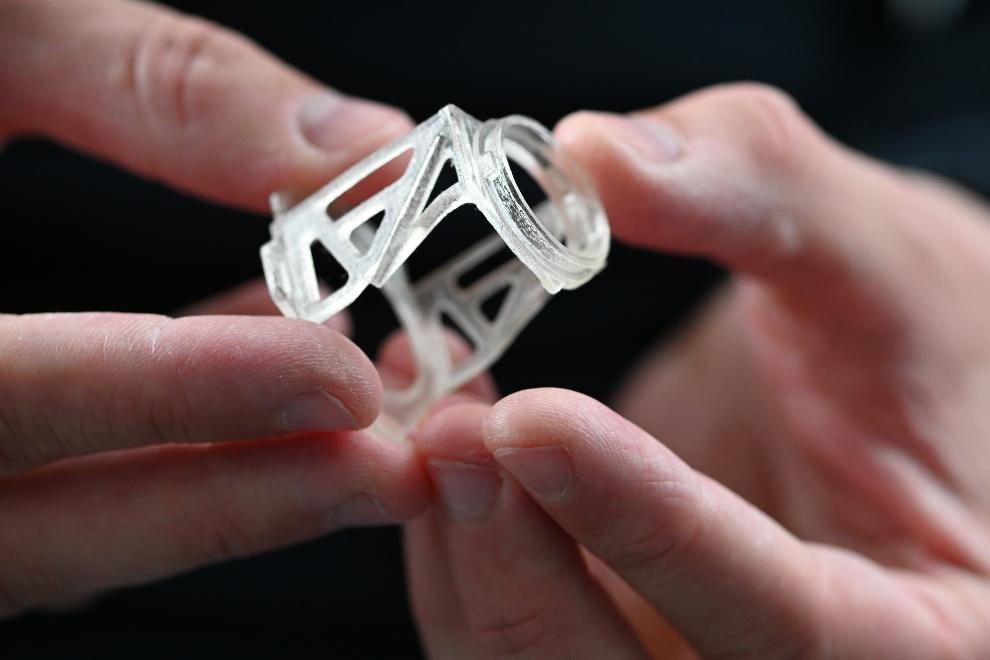- FMA
- The Fabricator
- FABTECH
- Canadian Metalworking
Our Publications
Categories
- Additive Manufacturing
- Aluminum Welding
- Arc Welding
- Assembly and Joining
- Automation and Robotics
- Bending and Forming
- Consumables
- Cutting and Weld Prep
- Electric Vehicles
- En Español
- Finishing
- Hydroforming
- Laser Cutting
- Laser Welding
- Machining
- Manufacturing Software
- Materials Handling
- Metals/Materials
- Oxyfuel Cutting
- Plasma Cutting
- Power Tools
- Punching and Other Holemaking
- Roll Forming
- Safety
- Sawing
- Shearing
- Shop Management
- Testing and Measuring
- Tube and Pipe Fabrication
- Tube and Pipe Production
- Waterjet Cutting
Industry Directory
Webcasts
Podcasts
FAB 40
Advertise
Subscribe
Account Login
Search
Zeiss finds greater sustainability through additive manufacturing
- October 29, 2020
- News Release
- Additive Manufacturing

Several years ago, Zeiss began 3D-printing tooling used in the manufacture of optical devices. Zeiss
Switching to 3D printing has allowed Zeiss Consumer Products to lower costs while saving energy and reducing its CO2 emissions, reports the manufacturer of camera lenses, binoculars, and other optical devices.
In an interview posted to the company’s website, Zeiss’ head of process engineering, Dr. Torsten Scheidt, and production engineer Florian Schimurda discuss how the company came to adopt 3D printing and the technology’s sustainability benefits.
Zeiss first began using 3D printing in 2017. “We saw great potential in additive manufacturing, and so we spent four months conducting intensive research, testing, and networking as part of a strategic project,” explained Scheidt. Working with both external providers and colleagues within the company, “we quickly realized that we needed to have all the relevant expertise in-house, and to invest in our very own 3D printers.”
Zeiss primarily uses AM to make production tools, such as assembly and special tools designed in-house, and operates various styles of printers. Four printers are now in use at the Oberkochen and Wetzlar (Germany) facilities.
“In several subdivisions, like cinematography lens assembly,” said Schimurda, “90% of all assembly tools are now produced using the 3D printing process. The main challenges of the switch were of a technical nature. That is, to find a suitable printer capable of producing tools precise enough and reliable enough to be used in manufacturing. Another aspect was to create acceptance among users [of the tools]. After all, printed tools don’t look the same as the ones we’ve been using until now. But they certainly have been very much accepted.”
As for how AM promotes sustainability, Scheidt said the new printed tools are made of artificial resin and have largely replaced the machined tools made of aluminum. “It’s important to note that aluminum production consumes a lot of energy and the material’s many alloys mean it cannot simply be recycled as is. At the same time, a 3D printer consumes much less energy than a cutting machine. So in terms of energy balance, the process impresses on account of both the material used and its processing. This has translated into savings of some 12,000 kWh in electrical power and 6.6 tons of CO2 in the first year alone.”
3D printing also expands design options. “There are certain recesses or voids that simply cannot be achieved with machining,” said Schimurda. “Machining used to require a lead time of four to six weeks, but now it takes us just two days to print a tool. And last but not least, the new process means we’re saving hundreds of thousands of euros every year.”
- Podcasting
- Podcast:
- The Fabricator Podcast
- Published:
- 04/16/2024
- Running Time:
- 63:29
In this episode of The Fabricator Podcast, Caleb Chamberlain, co-founder and CEO of OSH Cut, discusses his company’s...
- Trending Articles
- Industry Events
16th Annual Safety Conference
- April 30 - May 1, 2024
- Elgin,
Pipe and Tube Conference
- May 21 - 22, 2024
- Omaha, NE
World-Class Roll Forming Workshop
- June 5 - 6, 2024
- Louisville, KY
Advanced Laser Application Workshop
- June 25 - 27, 2024
- Novi, MI

























